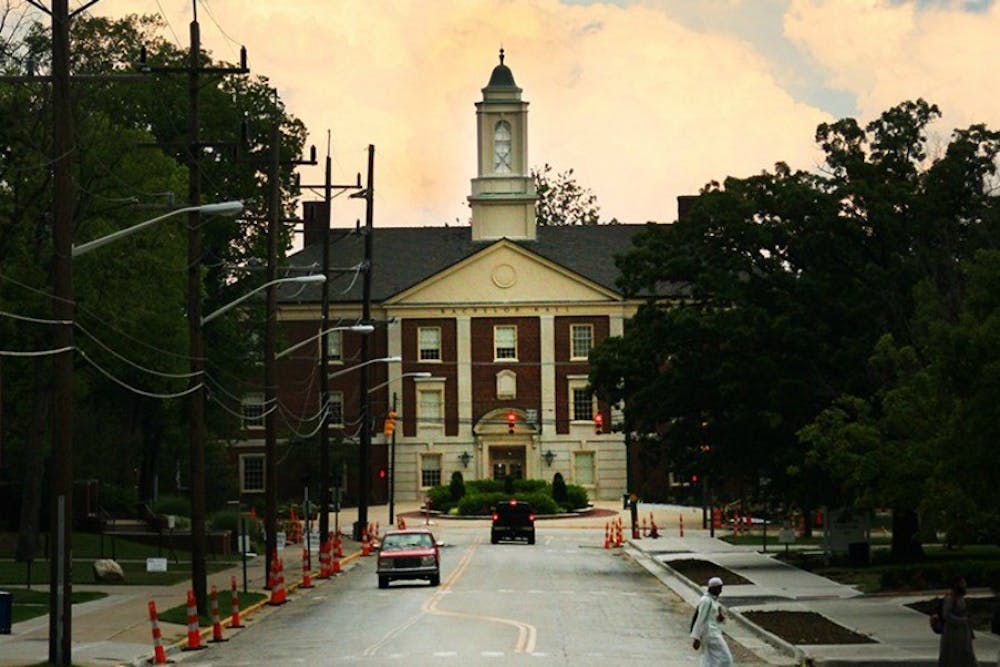The disappearance of Ron Tammen
By Megan Bowers, For The Miami Student
He was the epitome of a hard-working college student.
A Navy ROTC recruit, a bass fiddle player for the Campus Owls, a Delta Tau Delta fraternity brother, a varsity wrestler and a resident assistant at Fisher Hall, Ron Tammen had it all.
Until he vanished without a trace one cold Sunday night in 1953.
It was 10:30 p.m. on April 19 when Tammen's roommate, Charles Findlay, returned to the dorm after a long weekend at home.
When he walked in the room, the lights were still on and music was softly playing. Tammen's wallet and car keys were sitting on the desk and his psychology book was open with a yellow legal pad sitting next to it.
He assumed that Tammen had just gone to stay at the frat house for the night, so he went to bed without a second thought.
The next morning, when Tammen still hadn't returned, Findlay talked with his frat brothers and discovered no one had seen him since the previous night at 8:30.
A search began immediately, but he was never found.
Over the years, countless theories have surfaced, but it is impossible to know which, if any, are true.
Miami alumnus, Amelia Carpenter ('12), became particularly interested in the case.
"I'm kind of always the optimist, so I actually still think he's alive," said Carpenter. "I'm pretty sure there's just something we don't know or something we don't understand. I think that when, or if, he does die, we will hear about it and a resolution will finally come out."
To this day, Ron Tammen's whereabouts are unknown.
____________________________
The case of the Reid Hall murders and the bloody handprints
By Olive Overmoyer, For The Miami Student
A lone door leans against a wall in the Miami University Archives in Withrow Court. The number 304 sits prominently above the peephole. Splotches in the upper left corner reveal themselves to be handprints, a reminder of a fatal morning in May 1959.
In the early hours of May 9, Herbert Allan Lucas, a Miami first-year, attempted to fight fellow student James Walker.
The quarrel was over Sandy Epps, whom Walker had taken out on a date earlier that night. When Walker tried to end the argument by turning back to go to bed, Lucas shot him with a .22 caliber pistol he stole from the naval ROTC arsenal.
Roger T. Sayles, a resident assistant, ran to check out the commotion in the hall, but Lucas met him with shots to the head and chest. He leaned his bloody body against door 304 as he took his last breath.
In the Archives, a clear finish on that same door now immortalizes his handprints.
"We try to be sensitive because they were Miami students," said Jacky Johnson, interim university archivist.
Walker suffered only a flesh wound. Lucas, on the other hand, took his own life in an Ogden Hall telephone booth later that evening after speaking on the phone with Epps.
It is believed she informed him that a student had died.
__________________________
The phantom biker of Earhart Road
By Hannah Fierle, For The Miami Student
Even a town as charming as Oxford, Ohio is not without a sinister and spooky history.
Anyone who has driven into Oxford knows the country backroads are full of winding hills that can be quite dangerous, especially at night. It was on Oxford-Milford Road that a particularly chilling myth begins.
Legend says, many years ago, a young man was riding his motorcycle to his girlfriend's home on Earhart Road, with the intent of asking her to marry him. However, after missing a sharp turn in the road, the biker was projected from his motorcycle and decapitated by a barbed-wire fence.
Rumor has it that the biker still roams Oxford to ask for his girlfriend's hand in marriage.
Believers in this haunting tale have driven to the home where his girlfriend lived, currently owned by William Falk.
After parking south of the house, mythbusters are supposed to flash their car's headlights three times. Then, the headlight of the young man's motorcycle may be seen straight ahead, fading as it approaches the sharp turn that took the biker's life.
If the motorcycle light does not appear, it is recommended to immediately drive away from the house.
Allie Walker, a student at Purdue University who was visiting her sister at Miami, tried out the legend.
"After the third time we flashed our lights, we saw a sign up the road flash back twice and a light in the distance," said Walker. "But, when we drove away, there were no cars in sight that the light could have been coming from."
Falk, the current owner, could not be reached for comment.

